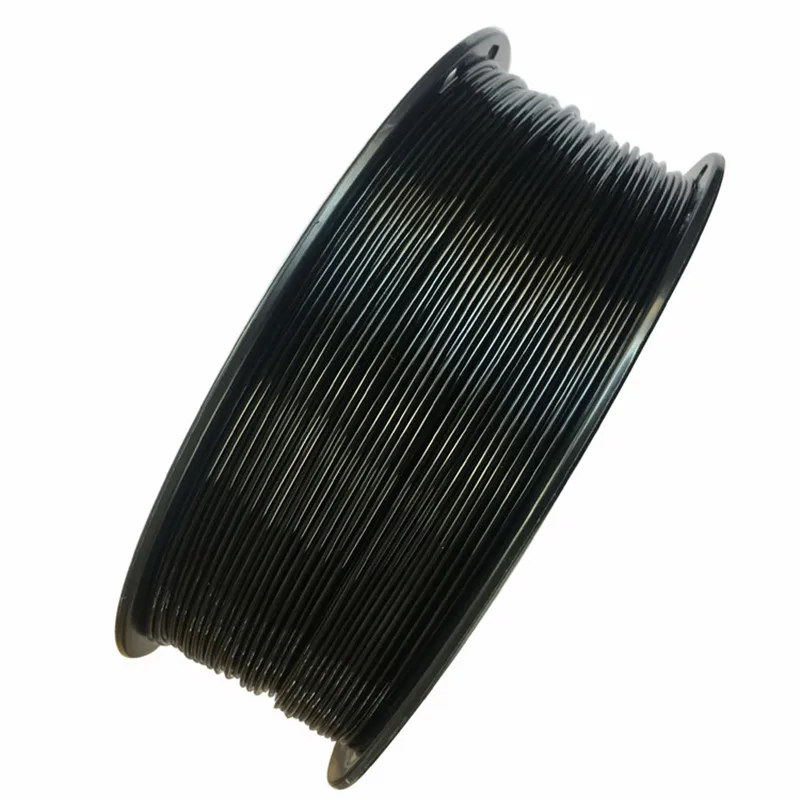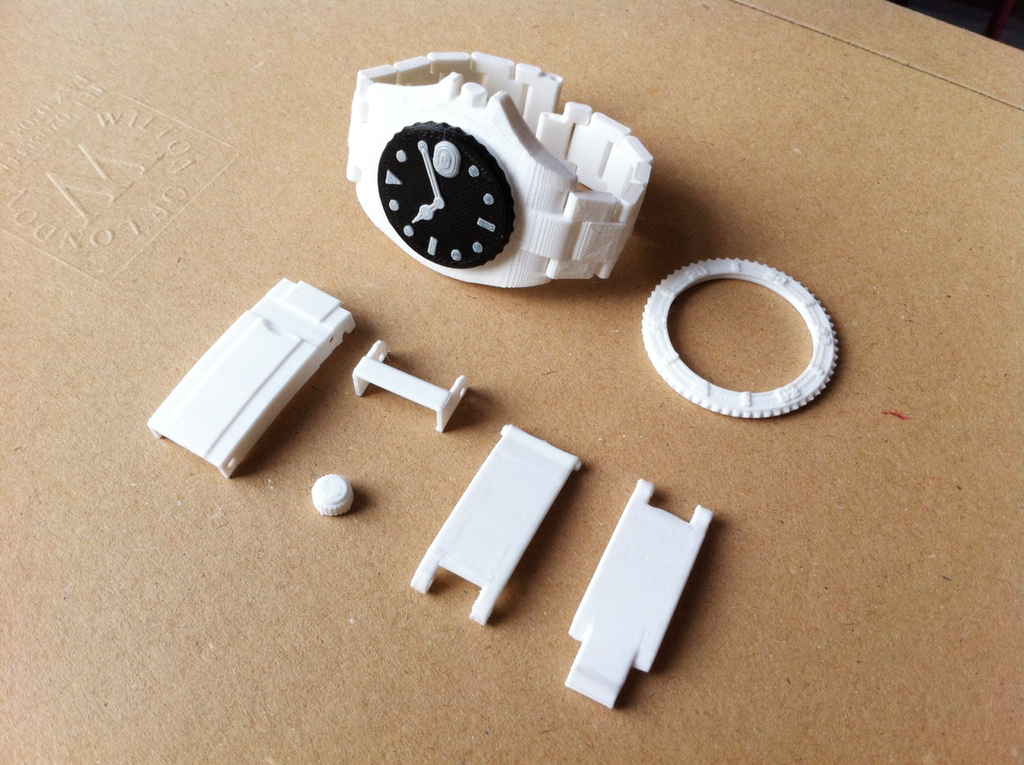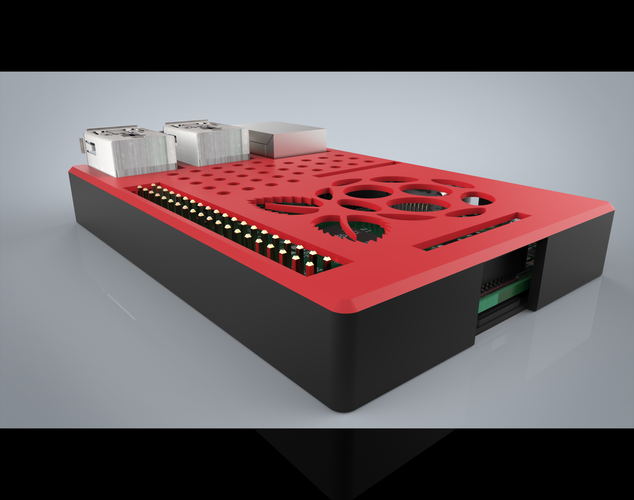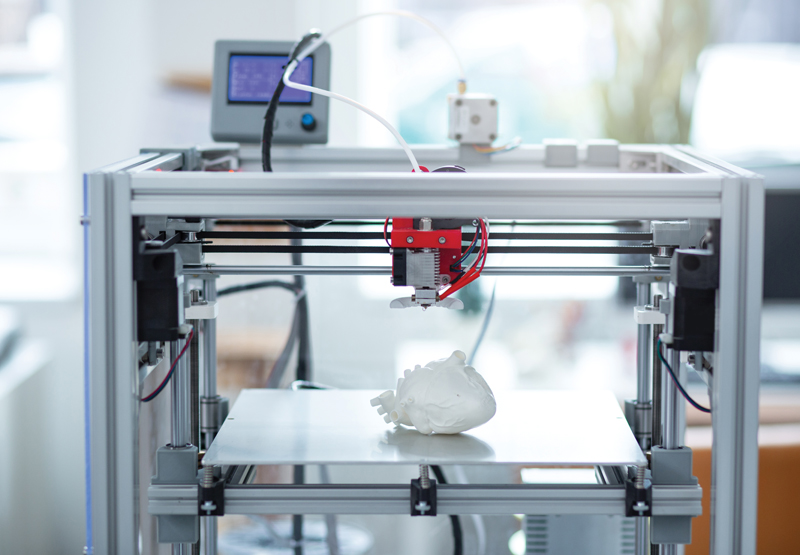High strength 3d printing filament
Choosing between PC, nylon, TPU, and others
Good 3D printing materials tend to offer a mix of desirable characteristics. These characteristics can include printability, durability, chemical resistance, temperature resistance, and flexibility, to name just a few. Chief among these desirable properties, however, is strength: nobody wants their 3D printed parts to break, and material strength is one of the best ways to ensure this doesn’t happen.
Take a look at the filament market and it’s easy to see that the strongest 3D printer filaments out there command a higher price than their weaker counterparts. This is partly due to the cost of the stronger raw materials, and partly due to the increased use of 3D printing as a tool for end-use manufacturing, with real functional parts requiring greater strength than prototypes. Demand for high-strength materials is growing, and many manufacturers have been happy to provide solutions.
This article looks at some of the strongest 3D printer filaments available for users of FDM 3D printers. It is by no means an exhaustive guide to high-strength materials, but it takes a look at some of the most popular high-strength filaments in the consumer sphere, while also touching on some professional-grade materials reserved for advanced users.
Strong 3D printing filament is in high demand, but “strength” can actually mean a few different things in this context. When comparing filaments, you’ll see terms like tensile strength, impact strength, tear strength, and flexural strength — all of which can be measured using standardized strength tests — in addition to more general terms like durability and toughness.
These different terms are needed because materials can be strong or weak in different ways. For example, try to imagine the relative strength of a glass bottle and a piece of chewing gum. If you were to hurl the two objects at a wall, the glass would obviously break and the chewing gum would survive almost unscathed. But you could much more easily pull the chewing gum apart with your hands than you could the glass bottle.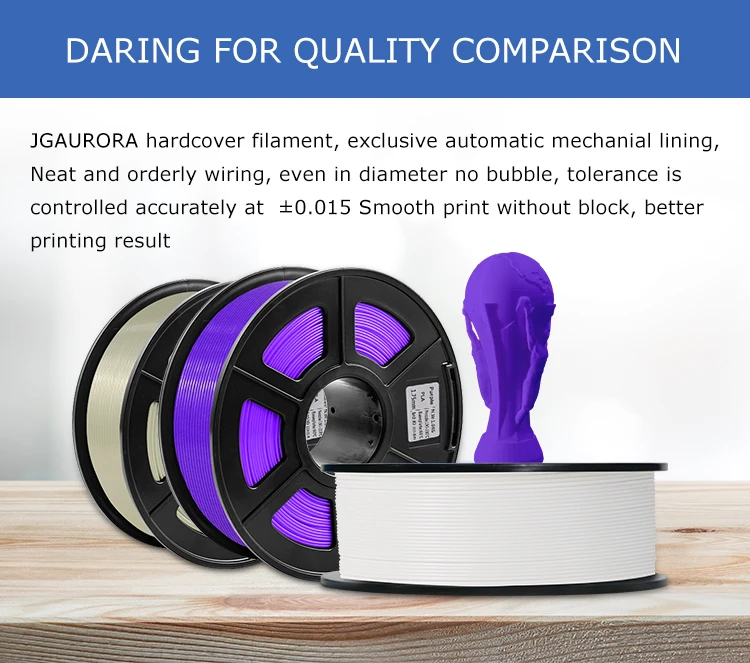
All of the various strength-related attributes are important when it comes to choosing and buying 3D printer filament. However, two types of strength are generally prioritized over any other. These are tensile strength and impact strength.
Tensile strength
Used to indicate the ultimate strength of a material or part, tensile strength can be defined as the ability to resist breakage when under tension, i.e. when being pulled or stretched.
Tensile strength is the most widely used indicator of strength for 3D printed parts, because it indicates a material’s suitability for load-bearing or mechanical applications. It is expressed in megapascals (MPa) or, in the United States, in pounds per square inch (psi), and values are determined by performing a tensile test: literally pulling a piece of the material apart and using a tensometer to record the exact degree of tension at which the material breaks. It is a key metric for almost any functional printed part.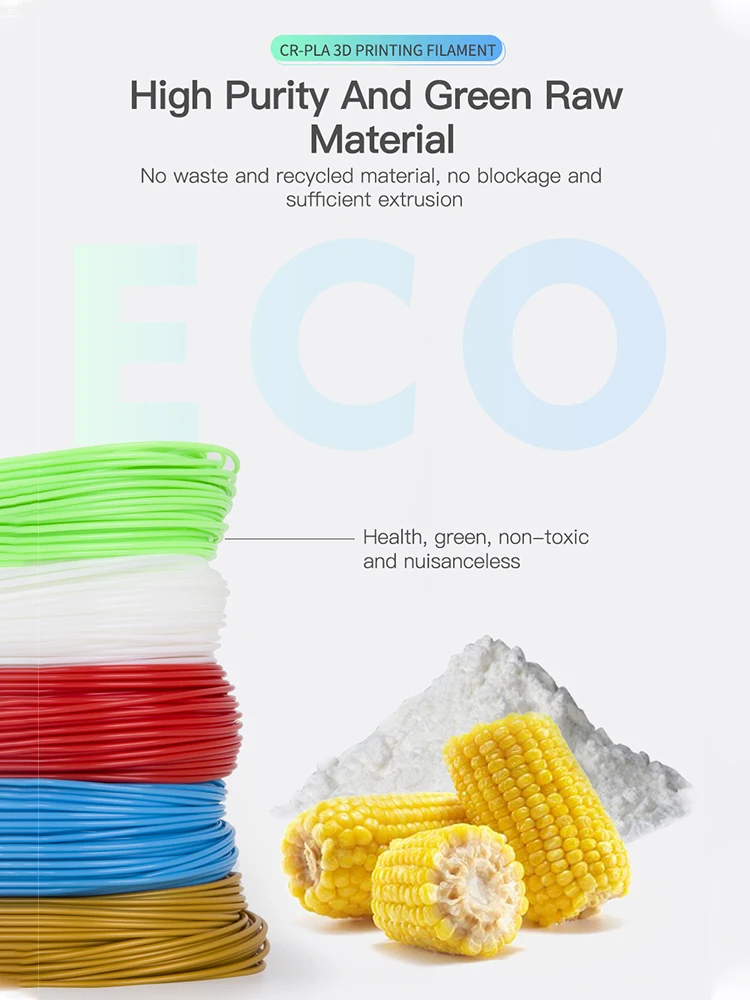
At the low-cost consumer level, the strongest 3D printer filaments in terms of tensile strength include polycarbonate (PC), polyethylene terephthalate glycol-modified (PETG), and polylactic acid (PLA). Weak materials include thermoplastic polyurethane (TPU) and acrylonitrile butadiene styrene (ABS).
Materials with good tensile strength are harder to break when pulled
Impact strength
Another key indicator of strength is impact strength. Synonymous with toughness, impact strength is the ability of a material or part to absorb shock and sudden impact without breaking. It is an important material property for items like safety equipment and children’s toys.
Impact strength is defined as the amount of energy — generally expressed in kilojoules per square meter (kJ/m2) — that the material is able to absorb without breaking. Brittle materials have a low level of impact strength and can break more easily when subjected to sudden impact.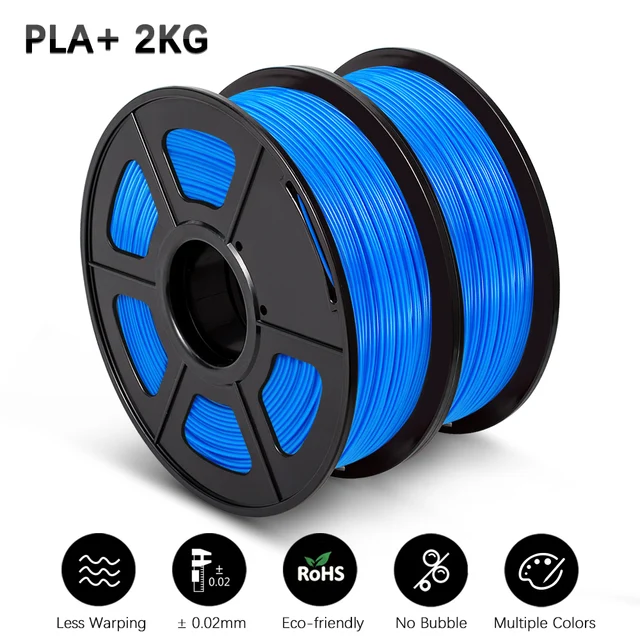 However, materials can have a high impact strength and a low tensile strength, and vice versa.
However, materials can have a high impact strength and a low tensile strength, and vice versa.
Unfortunately, due to the many different ways of testing for impact strength, it can be difficult to compare the exact toughnesses of two different filaments side by side. Two different filament manufacturers might use different testing methods and even different units of measurement.
At the consumer level, the strongest 3D printer filaments in terms of impact resistance include ABS filament, PETG filament, PC filament, and flexible filaments like TPU. One very weak material in terms of impact strength is PLA, which can easily shatter if it is dropped or struck.
Other strength metrics
Beyond tensile strength and impact strength, some notable terms you might find on a material’s data sheet include:
Flexural strength: Refers to how well a material can resist breakage when it is bent or under load; expressed in megapascals (MPa)
Tear strength: Refers to how well a material can resist the growth of cuts when it is under load; expressed in kilonewtons per meter (kN/m)
Elongation at break: Relates to tensile strength and refers to how much a material stretches before it breaks when under tension; expressed as a percentage
Recommended reading: 5 options to get strong parts with 3D printing
Approx tensile strength: 70 MPa
One of the strongest FDM 3D printing materials — in terms of both tensile[1] and impact strength — is polycarbonate (PC).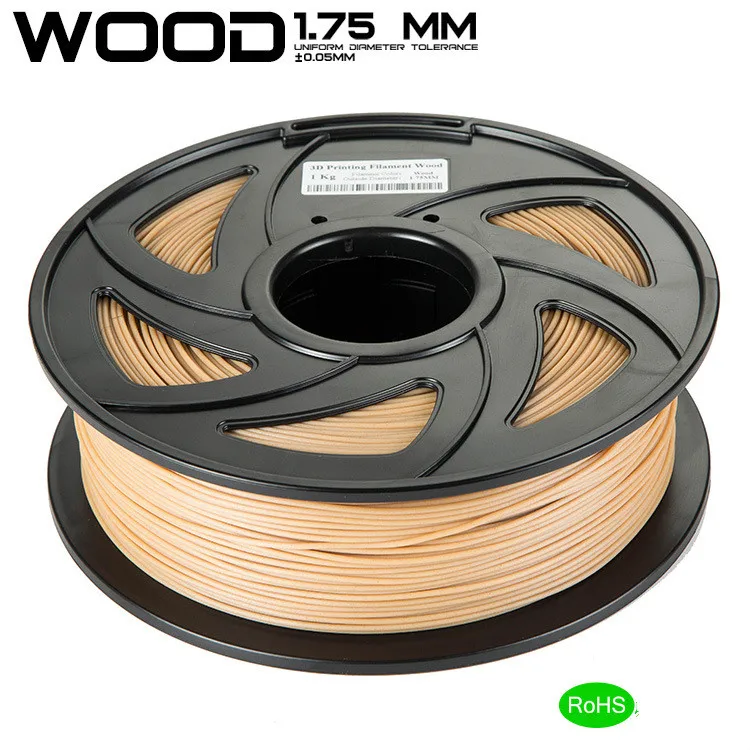 In fact, polycarbonate filament would likely be one of the most popular printing materials were it not so difficult to print.
In fact, polycarbonate filament would likely be one of the most popular printing materials were it not so difficult to print.
Advantages of polycarbonate, besides its excellent tensile and impact strength, include its temperature resistance and its suitability for printing transparent parts. An obstacle to the printing of PC is its very high melting point and the very high temperatures required to print it. Extruder temperatures of at least 260 °C are required, with some formulations needing more than 300 °C, which is beyond the capabilities of consumer-level desktop 3D printers. A bed temperature of around 100 °C is recommended.
Some brands of PC contain additives that reduce the material’s melting point, but these additives can also compromise the material’s strength and heat resistance, making them less suitable for end-use parts such as automotive components.
PC 3D printing is usually limited to non-budget systems that can print at high temperatures and extract the best strength properties from the material.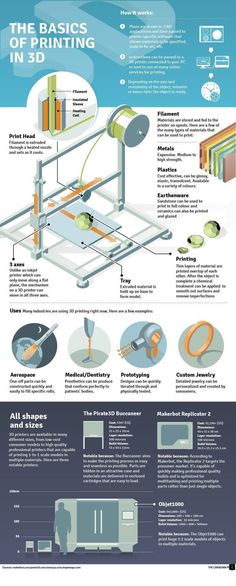 However, even these systems can struggle to control the material’s proneness to warping.
However, even these systems can struggle to control the material’s proneness to warping.
Popular PC filaments include Raise3D Premium PC, Polymaker PolyMax, and 3DXTech 3DXMax PC.
Approx tensile strength: 50–80 MPa
Another strong filament in both the tensile and impact departments is nylon (PA). Although not as robust as PC, nylon filament is marginally easier to print, requiring an extruder temperature of around 250 °C and a heated bed set to around 80 °C.
Nylon is perhaps more often associated with selective laser sintering (SLS), where it is used in powder form to make industrial parts and prototypes. However, nylon FDM 3D printer filament is widely available and typically comes at a lower price point than PC. Compared to PC, it is slightly more flexible, which may be desirable for certain functional parts. Other advantages of nylon filament include its excellent durability, surface smoothness, and layer adhesion.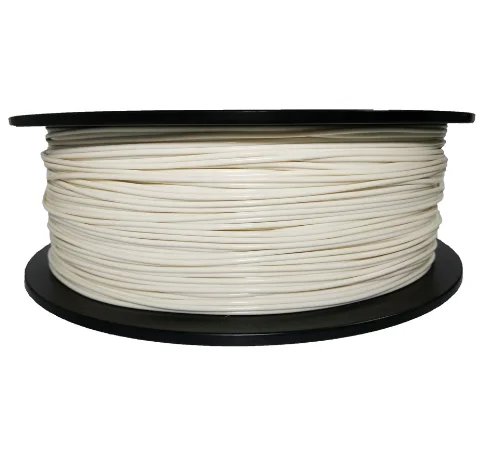
Although most desktop printers can process nylon filament, the high-strength material has drawbacks. For example, it is highly hygroscopic and prone to absorbing moisture, which can cause a variety of printing issues, such as the formation of bubbles in the nozzle. Like PC, nylon is also susceptible to warping as it cools down.
Popular nylon filaments include MatterHackers Pro Series Nylon, Ultimaker Nylon, and ColorFabb PA.
Approx tensile strength: 20–50 MPa
Though not usually thought of as high-strength materials due to their very low tensile strength, flexible filaments like thermoplastic polyurethane (TPU) actually offer a very high level of impact strength, making them suitable for shock-absorbing printed objects and functional parts like protective enclosures. Naturally, TPU has a very high elongation at break compared to more rigid materials, and the material also has good abrasion resistance and chemical resistance.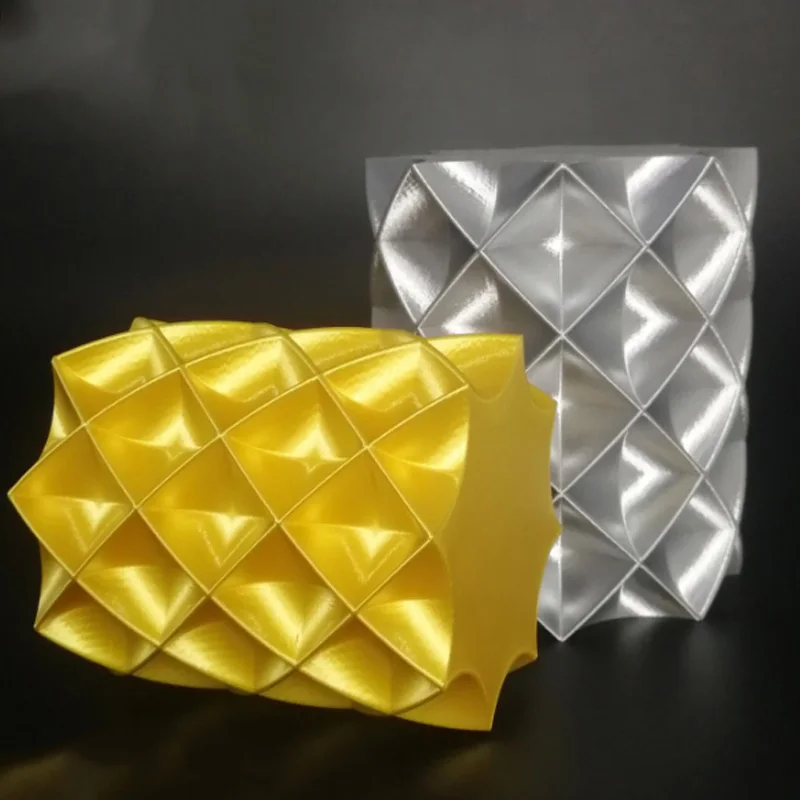 Its tensile strength, however, is very low, making it unsuitable for mechanical parts.
Its tensile strength, however, is very low, making it unsuitable for mechanical parts.
Most desktop 3D printers can print TPU and other varieties of thermoplastic elastomer (TPE), with a hot end temperature of around 230 °C required. However, note the best 3D printers for printing flexible filaments have direct-drive extruders, as Bowden extruders can suffer filament tangles.
Popular TPU filaments include NinjaTek Cheetah TPU, Polymaker PolyFlex, and Fillamentum Flexfill.
Recommended reading: TPU print settings explained
In professional and industrial settings, many FDM users are now turning to high-performance materials like PAEK (PEEK and PEKK) and PEI (ULTEM) for the production of end-use parts, especially in demanding industries like automotive and aerospace. When filament strength is the highest priority, these engineering-grade materials are far better than ordinary products like PLA filament.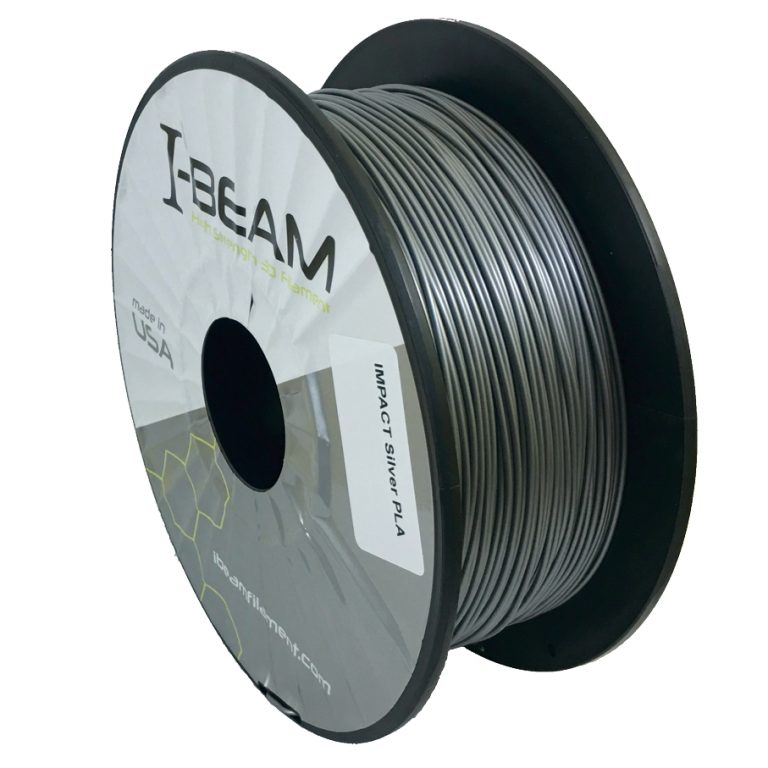
High-performance plastics offer a very high level of tensile strength. PEEK filament, for example, can have a tensile strength as high as 100 MPa, notably higher than PC filament and significantly higher than ABS filament. Materials in the PAEK family also have very good impact strength; PEI is slightly less tough, but is typically much more affordable than PAEK filament.
The obvious drawback of high-performance polymers is that they cannot be printed on beginner-level printers or even mid-level desktop machines. They demand much higher temperatures (nozzle, bed, and enclosure) than regular materials, are more expensive, and sometimes require annealing to maximize their mechanical performance.[2]
Popular high-performance filaments include 3DXTECH ThermaX PEEK and Markforged ULTEM 9085.
The strength and stiffness of thermoplastics can be increased by mixing them with reinforcing additives, creating what is called a composite filament.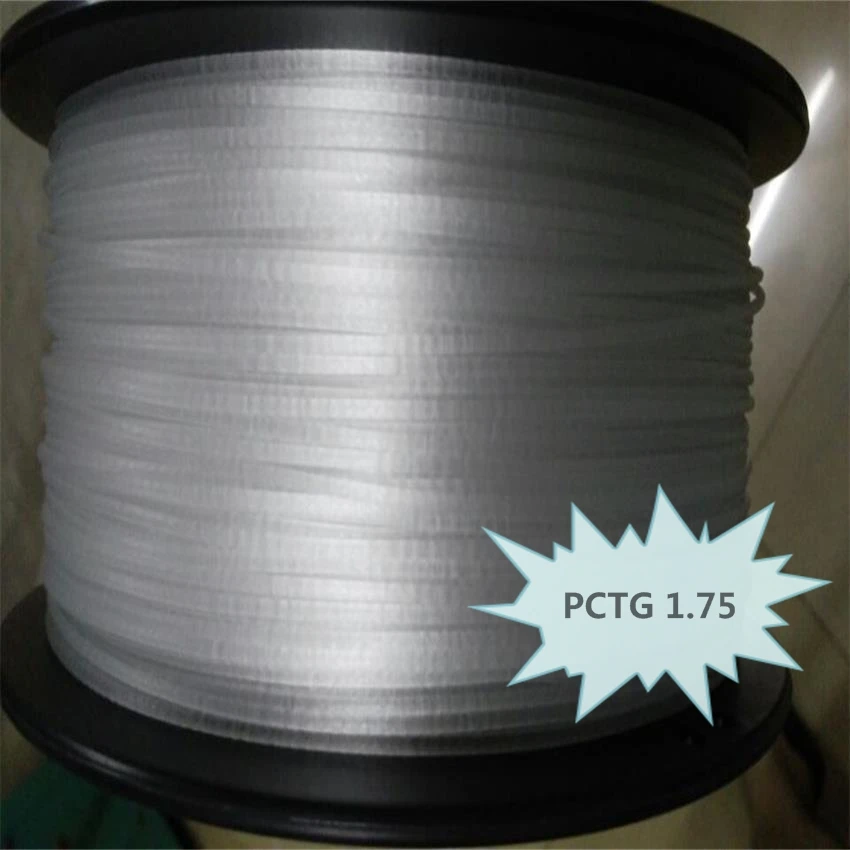 Common additives include chopped carbon fiber and fiberglass.
Common additives include chopped carbon fiber and fiberglass.
Composites are popular in FDM 3D printing because they enable users to incorporate strong materials like carbon fiber without adjusting the printing process. Because there is a greater amount of thermoplastic than additive in the composite, the material can still be melted and extruded like an ordinary filament.
Reinforced composites can have a high level of tensile strength. For instance, MatterHackers NylonX (a composite of nylon and carbon fiber) has a tensile strength of 100 MPa.
Note, however, that FDM carbon fiber filaments have limits on their strength, because the chopped fibers mixed into the material are randomly oriented. Advanced composite printing technologies, such as those developed by Markforged and Desktop Metal, are able to print continuous fibers, resulting in much stronger parts.[3]
Choosing the strongest 3D printer filament for your needs comes down to two key factors: the type of strength required and the level of strength required (that is feasible with the printing hardware available).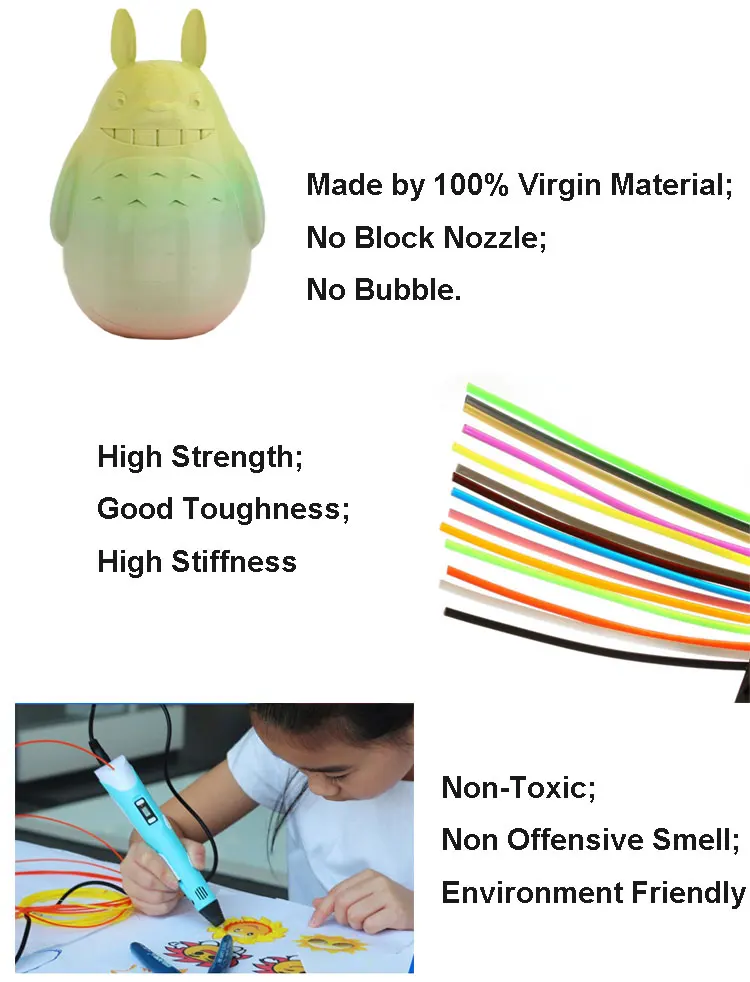
If the parts need to withstand constant loads and stresses, then materials with a high tensile strength should be prioritized. These include PLA and PETG at the cheaper end, materials like PC in the middle, and composites or high-performance polymers — offering the very highest levels of tensile strength — at the premium end.
If the parts need to withstand sudden impact, then materials with a high impact strength or toughness should be prioritized. Such materials include ABS and TPU at the consumer end and high-performance polymers at the premium end.
In general, materials like nylon and polycarbonate are favored by many FDM users because they offer a good balance between affordability, tensile strength, and impact strength.
[1] Tanikella NG, Wittbrodt B, Pearce JM. Tensile strength of commercial polymer materials for fused filament fabrication 3D printing. Additive Manufacturing. 2017 May 1;15:40-7.
[2] Yi N, Davies R, Chaplin A, McCutchion P, Ghita O.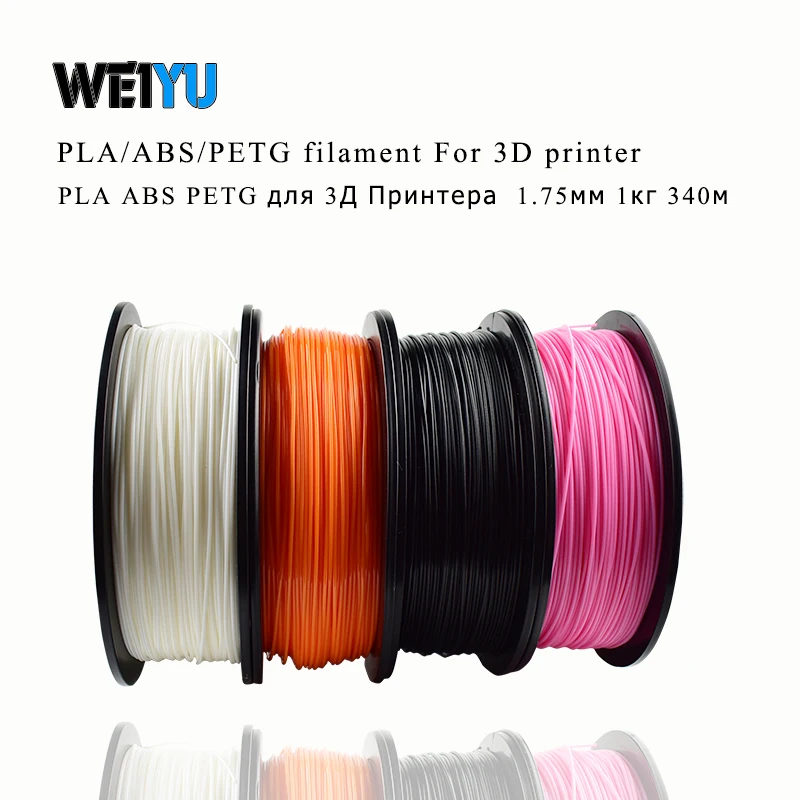 Slow and fast crystallising poly aryl ether ketones (PAEKs) in 3D printing: Crystallisation kinetics, morphology, and mechanical properties. Additive Manufacturing. 2021 Mar 1;39:101843.
Slow and fast crystallising poly aryl ether ketones (PAEKs) in 3D printing: Crystallisation kinetics, morphology, and mechanical properties. Additive Manufacturing. 2021 Mar 1;39:101843.
[3] Yang C, Tian X, Liu T, Cao Y, Li D. 3D printing for continuous fiber reinforced thermoplastic composites: mechanism and performance. Rapid Prototyping Journal. 2017 Jan 16.
What is the Strongest 3D Printer Filament? (2023) – Clever Creations
PEEK is the strongest 3D printer filament with an ultimate tensile strength of more than 7250 PSI. However, because PEEK requires high printing temperatures, Polycarbonate filament is an often preferred alternative that also offers high strength to your 3D prints.
The strength of your 3D printed part greatly depends on your filament material. In critical load-bearing applications, you must choose a strong 3D printer filament that is able to resist deformation. Knowing the strength of popular filaments will help you make better decisions in your designs and select the best material for your parts.
In this article, we’ll look at six different filaments and compare their strength and mechanical properties to determine which is the strongest 3D printer filament. We’ll also provide some tips on how you can use these filaments to create strong, long-lasting 3D printed parts.
What types of strength are there?
Tensile Strength
The tensile strength indicates the material’s ability to withstand deformation when stretched. It is used to test the strength of any material, and in our case, the strength of the 3D printed model. Tensile strength gives you an idea about how far you can load an object before it fails.
For example, the tensile characteristics of a carabiner will let you know if it’s safe to use for mountaineering. The strongest 3D printing filament should have a high tensile strength so that your models don’t fail or break easily.
PEEK, Polycarbonate, and Carbon fiber-infused filaments have some of the highest tensile strengths and are strong filaments apt for load-bearing applications.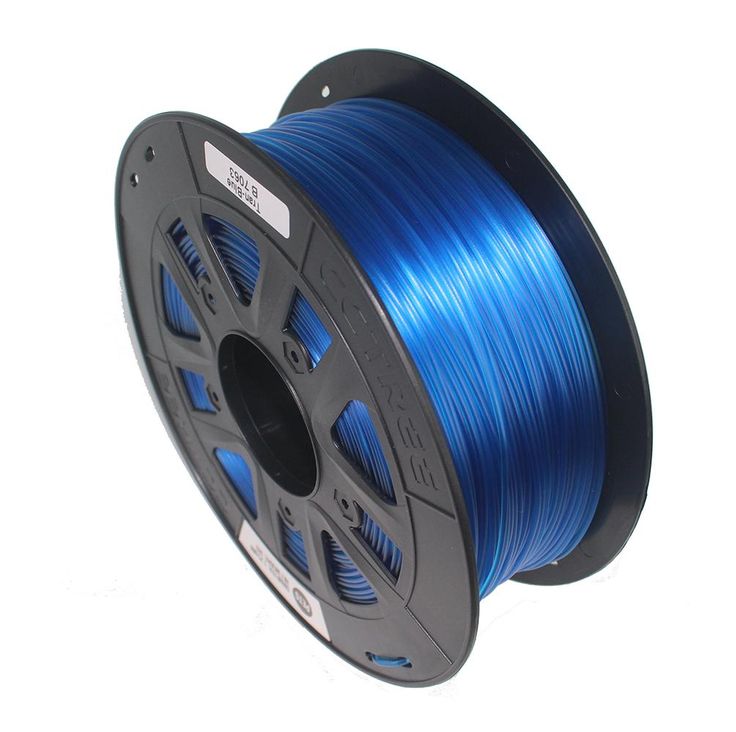
Impact resistance
Impact strength is the measure of a material’s ability to withstand an impact without breaking or fracturing. The higher the impact strength of a filament, the less likely it is to break or fracture when subjected to sudden stress.
Polycarbonate, Nylon, and PEEK are all examples of 3D printing filament with excellent impact resistance. These materials can bear high sudden loads before they fracture and fail. These materials are typically used for tool housings, safety boxes, eyeglasses, and safety equipment.
Other considerations
Chemical resistance
Chemical resistance matters when your application involves chemical liquids and a harsh environment. Nylon and Polycarbonate have excellent chemical resistance. They’re useful for 3D printing objects that will come into contact with harsh chemicals. ABS is also resistant to some chemicals, but not as much as nylon and polycarbonate.
UV resistance
Outdoor applications demand a 3D printer filament with high UV resistance.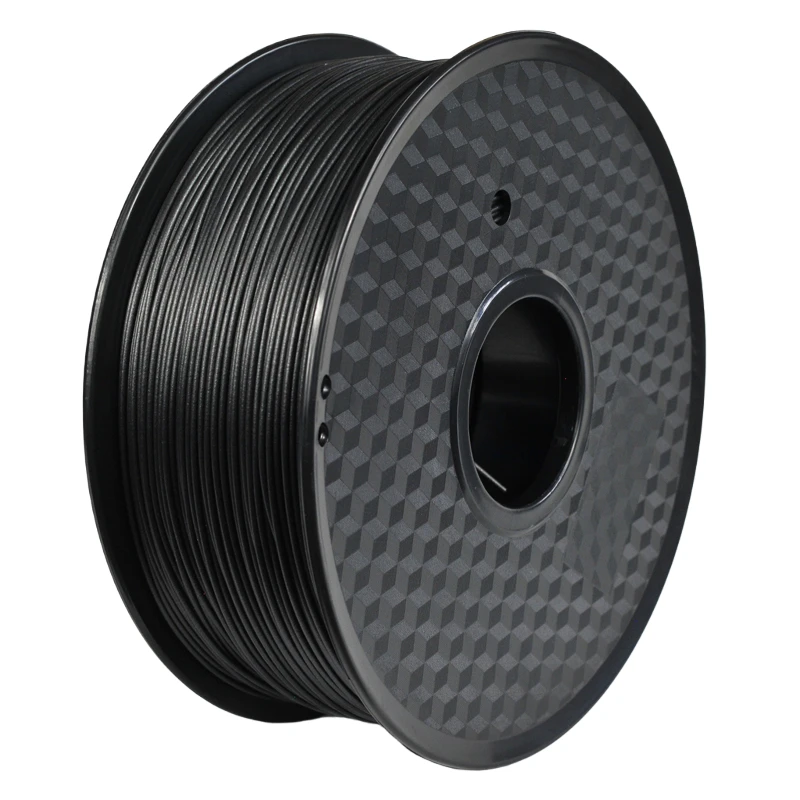 The UV exposure from sunlight weakens the material’s bonds and can cause your parts to fail. 3D printing filaments like ABS, ASA, and Nylon are most resistant to UV light. These are the ones you want to use for outdoor functional applications.
The UV exposure from sunlight weakens the material’s bonds and can cause your parts to fail. 3D printing filaments like ABS, ASA, and Nylon are most resistant to UV light. These are the ones you want to use for outdoor functional applications.
Temperature resistance
High-temperature applications will need 3D printing filament that does not soften at those temperatures. The strongest filament for these applications needs to have high heat resistance, as it must be able to perform under extreme conditions without any failure.
Nylon, PEEK, and Polycarbonate filaments have more heat resistance than other filaments, but keep in mind that they do need to be 3D printed at higher temperatures than others. This means you need to make sure that your 3D printer hot end can handle these temperatures.
What is the strongest 3D printer filament?
PolycarbonatePolycarbonate (PC) is known for its high-impact resistance, excellent toughness, and temperature resistance. It is one of the strongest filaments with transparent and lightweight qualities. A 2020 study concluded that polycarbonate filament has an Ultimate tensile strength of over 5200 PSI, making it one of the strongest 3D printer filaments on the market today.
It is one of the strongest filaments with transparent and lightweight qualities. A 2020 study concluded that polycarbonate filament has an Ultimate tensile strength of over 5200 PSI, making it one of the strongest 3D printer filaments on the market today.
Polycarbonate filament has good chemical and UV resistance too. Moreover, it can withstand high temperatures of up to 140 °C before softening. It is even used as an additive to enhance ABS filament’s properties to a great extent. Combined, these characteristics let you print protective equipment, medical instruments, and functional prototypes.
Yet, PC filament is tough to print, warps easily, and can absorb moisture from the air. To deal with this, an enclosed 3D printer and proper filament storage are recommended.
Deal with these challenges successfully and you can enjoy Polycarbonate as the strongest 3D printer filament for durability and high-temperature applications.
NylonImage: AMFG
Nylon filament belongs to a class of Polyamide plastics.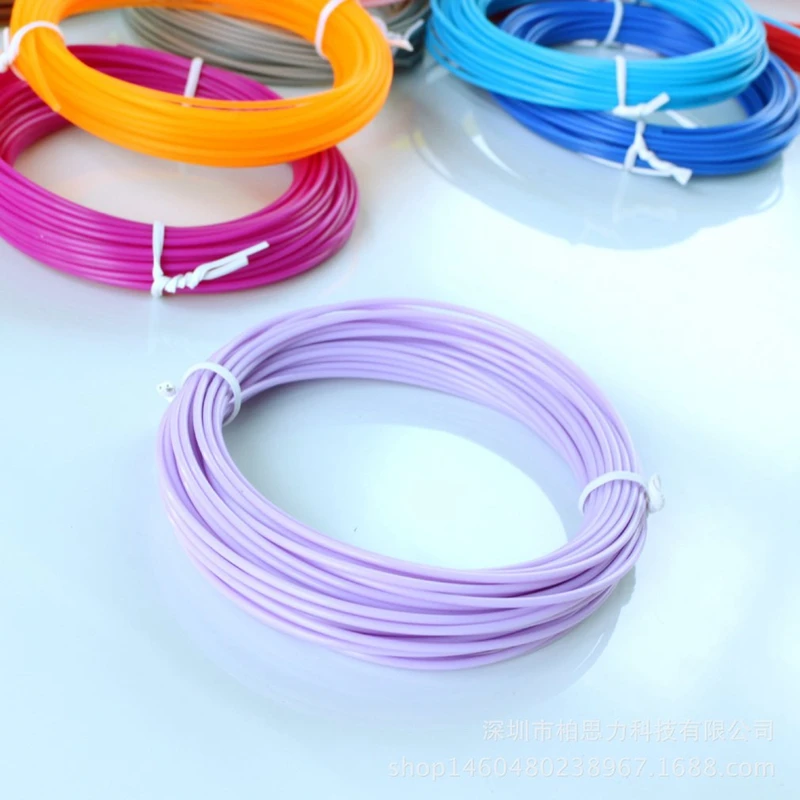 They’re known for their excellent mechanical strength and low coefficient of friction. Nylon is a common material in SLS 3D printing, but there are also plenty of FDM Nylon 3D printers that you can use to successfully 3D print with this material.
They’re known for their excellent mechanical strength and low coefficient of friction. Nylon is a common material in SLS 3D printing, but there are also plenty of FDM Nylon 3D printers that you can use to successfully 3D print with this material.
BCN3D’s testing of Nylon filament showed an impact strength of approximately 75 kJ/m2. This is higher than PLA, ABS, and PETG, making Nylon filament one of the best 3D printer filaments for high-impact applications. The low coefficient of friction and its high impact-resistant nature make Nylon a perfect material for gears, machine parts, hinges, and jigs and fixtures.
The downside of Nylon filaments are their hygroscopic nature and a tendency to warp easily, similar to Polycarbonate filament. You need a finely controlled printing environment to ensure that you can print Nylon without problems.
ABSAcrylonitrile Butadiene Styrene (ABS) filament was one of the earliest 3D printing thermoplastics. It is still a relatively widely used material due to its versatility and low price, but both PETG and ASA filament are starting to be favored more and more over ABS because of their superior properties.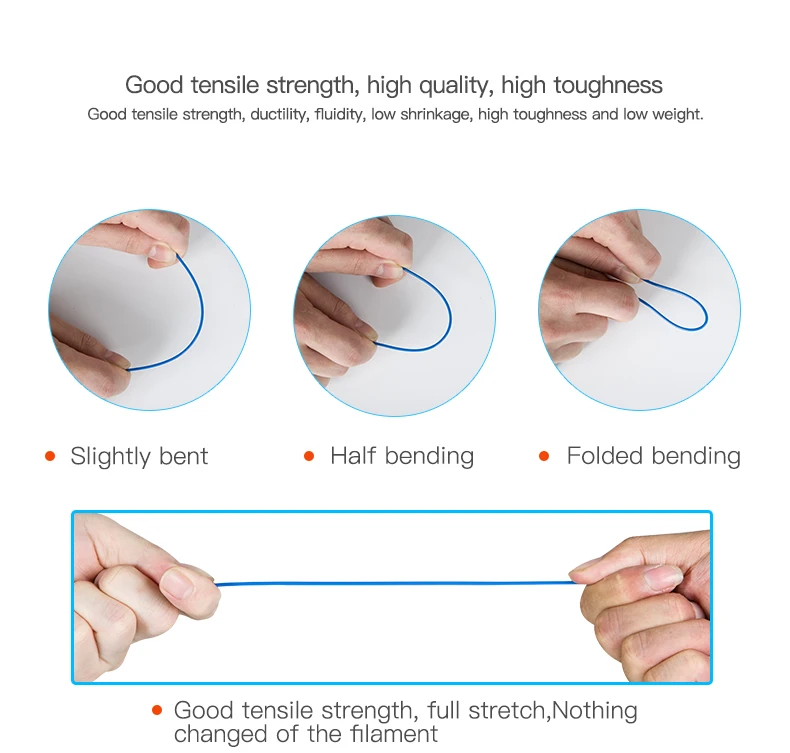
A 2019 study shows that ABS has an ultimate tensile strength of more than 4500 PSI. This gives ABS a lower tensile strength than polycarbonate filament, but its relative ease of printing and accessibility can still make it a better choice.
You can use ABS for functional prototypes, boxes, and automotive components. Its high melting temperature allows for better heat resistance than other 3D printing filaments. This is important for applications where the product needs to withstand higher temperatures, such as in a car that’s exposed to direct sunlight.
You can post-process your ABS 3D printed parts using Acetone. It’ll give your parts a smooth surface finish with a glossy look. This makes ABS filament suitable for printing aesthetic models and figures.
But, like other high-temperature thermoplastics, ABS filament tends to warp easily. Although you can print it on most budget 3D printers, it helps if you 3D print ABS filament inside of a 3D printer enclosure.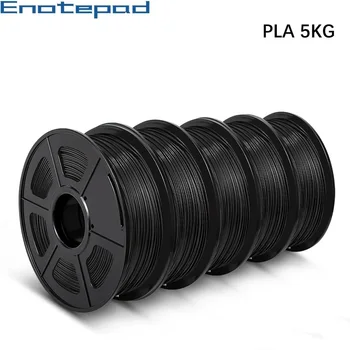 This helps with containing 3D printing fumes as well, a common problem with ABS filament.
This helps with containing 3D printing fumes as well, a common problem with ABS filament.
Image: Creative Tools via Flickr, CC BY 2.0
TPU (Thermoplastic Polyurethane) filament is a flexible filament with excellent toughness and impact resistance. Its flexibility depends on the blends of materials. It can be varied by the manufacturer to offer high rigidity or high elasticity.
Devin from Make Anything tested various brands of TPU filament. He concludes that many TPU filaments can withstand high loads before they break. It is resistant to wear and tear due to abrasion and exhibits strong chemical resistance. It is suitable for printing protective gears, phone cases, prosthetics, and even footwear.
TPU prints at lower temperatures and doesn’t need high-end 3D printers. But the flexible nature of TPU makes it difficult to 3D print with Bowden extruders. You need to print it at slow speeds to ensure that you do not jam the hot end. Another important thing to pay attention to is that setting a higher infill value with TPU parts will lead to stiffer 3D printed parts, and vice versa.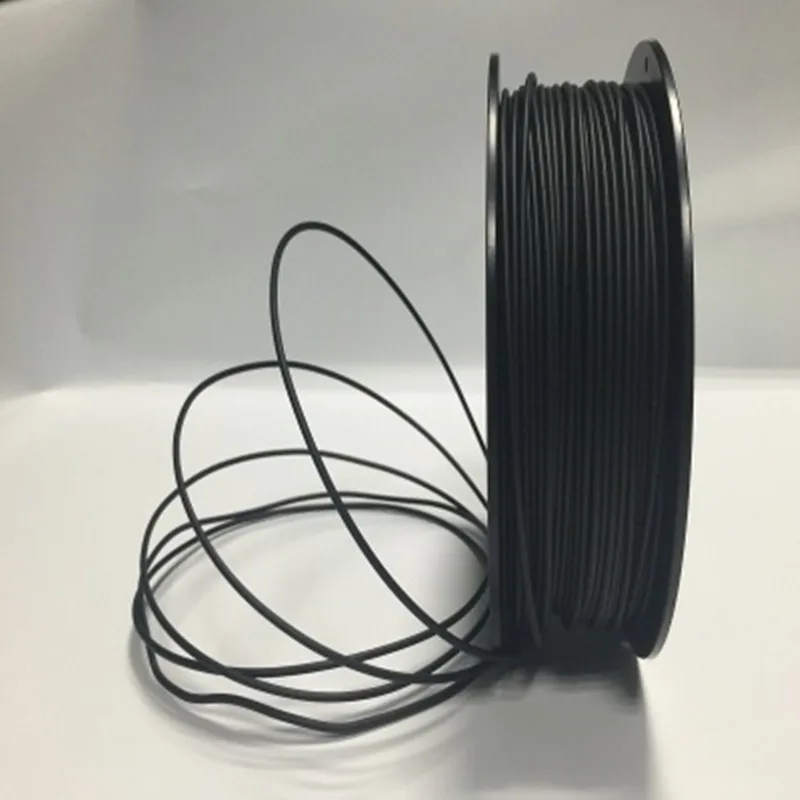
Recommended:
The Best Flexible Filaments for 3D Printing
PEEK
Image: 3DGence
PolyetherEtherKetone (PEEK) is the strongest 3D printer filament with a tensile strength of about 7250 PSI. PEEK is a strong filament with about 50% more strength than Polycarbonate. It makes PEEK a high-performance thermoplastic suitable for some very particular high-end applications.
PEEK also has an excellent strength-to-weight ratio. Its Young’s modulus is like that of a human bone, making it apt for medical applications. Its lightweight nature and high-temperature resistance are useful in aerospace industries. PEEK is used to print structural components and heat shields in these fields.
PEEK filament is a high-temperature thermoplastic and needs a specific printing setup to print well. It is also expensive compared to other thermoplastics and not easily accessible.
Usually, PEEK is reserved for industrial applications. However, with the right 3D printer and proper setup, you can achieve great results with PEEK at home.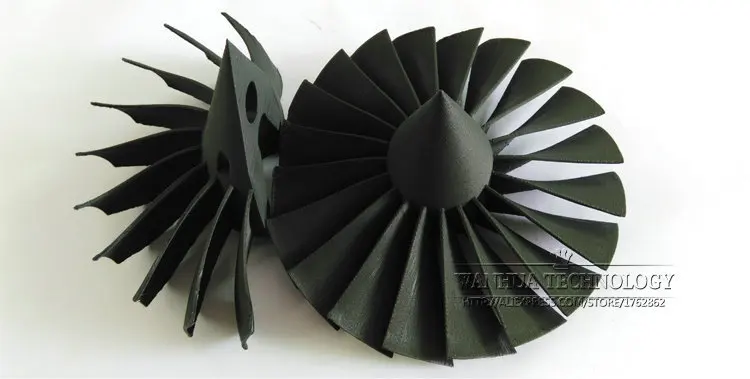
Composite Materials
Carbon FiberCarbon fiber is used to add strength to various 3D printer filaments, like PLA, Polycarbonate, PETG, and Nylon. The resulting material consists of filament with short fibers of carbon ingrained. This increases hardness and abrasion resistance. Compared to parts printed with regular filament, carbon fiber filament parts can be made more lightweight and with increased stiffness.
Carbon fiber-infused Nylon filaments have high hardness. But the tensile strength remains like a regular Nylon filament. The increased hardness makes it suitable for machine parts and structural components. Typical applications would include 3D printed drone frames, tools, and support structures.
Because Carbon fiber has a high hardness and you will need stainless steel or a ruby-tipped nozzle. Regular bronze 3D printer nozzles will wear out in no time.
It is also recommended to print carbon fiber-infused filament at low speeds.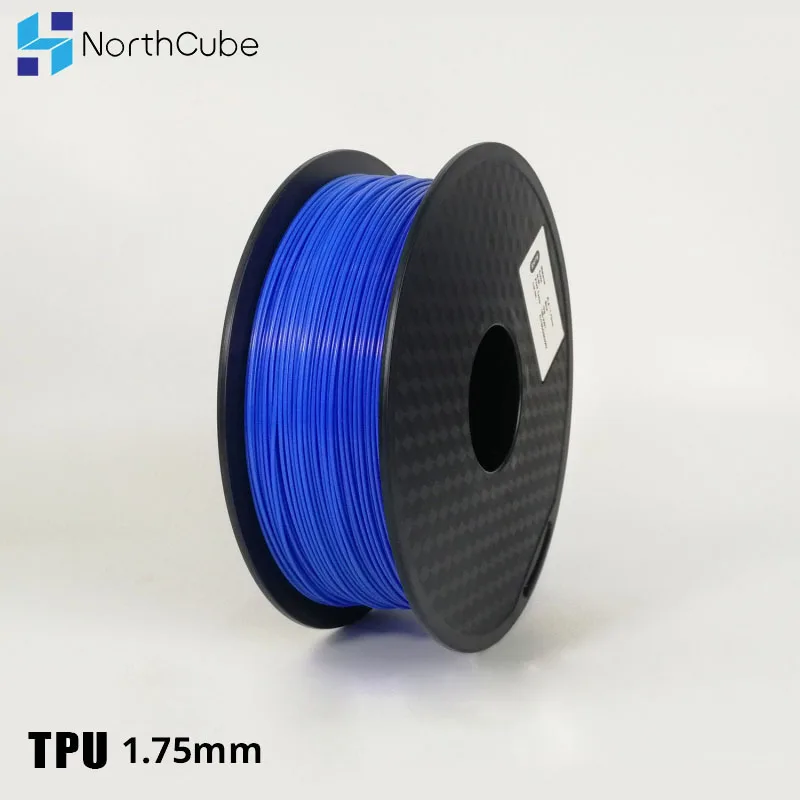 This reduces the chances of clogs and offers a more consistent print quality.
This reduces the chances of clogs and offers a more consistent print quality.
PRILINE Carbon Fiber Polycarbonate 1KG 1.75 3D Printer Filament,...
Check Price Polycarbonate BlendsImage: Javelin Tech
As stated earlier, Polycarbonate has excellent toughness and is resistant to impact loads. It is not easy to 3D print, however. This is why many users cannot take advantage of the material’s properties. To overcome this, filament manufacturers introduced Polycarbonate composite filaments blended with ABS materials.
In the Polycarbonate study mentioned above, researchers also tested a PC-ABS blend filament. They found that it has a significantly higher tensile strength of upwards of 6000 PSI, compared to ABS’s 4500 PSI. This means that the parts produced using PC-ABS filament can deform more before failure, giving PC-ABS filament an edge over regular ABS filament.
Polycarbonate also increases the part’s chemical and high-temperature resistance. This blend is an excellent alternative if you need high-strength parts that are easy to print.
This blend is an excellent alternative if you need high-strength parts that are easy to print.
Polymaker PC-ABS Filament 1.75mm White Polycarbonate Filament 1.75mm...
Check PriceWhat is the strongest 3D printer resin?
3D printer resin is inherently brittle and breaks easily under the slightest loads. A lot of resins are catered toward 3D printing miniatures and other small, high-detailed models that do not require a lot of strength. Some resins, like tough and engineering resins, are specifically formulated for high-strength applications.
In his video experiments, Stefan from CNC Kitchen conducted tests on various resin materials. He found that Siraya Tech Blu tough resin exhibited increased toughness properties. The strength of the printed parts was like ABS and PETG 3D prints with excellent layer adhesion.
Regardless of which strong 3D printing resin you choose, you will need the best resin 3D printers to get the highest-quality 3D printed parts.
Siraya Tech Blu 3D Printer Resin Tough Clear Resin 3D Printing with...
Check PriceFrequently Asked Questions
What is the most durable 3D printing material?
The most durable 3D printing filament is polycarbonate. It has a high degree of toughness and resistance to wear, making it perfect for use in a wide range of applications. It also has a high resistance to impact, and is resistant to UV rays, making it ideal for use in 3D printing applications that require durability and toughness.
What filament is stronger than PLA?
There are a few different filaments that are stronger than PLA. One of the most popular is PETG, which is a strong and durable plastic that is ideal for prototyping. Polycarbonate and PEEK are also both very strong materials that are often used for industrial applications.
Which is stronger, PETG or ABS?
Comparing PETG vs ABS, if we’re talking about overall filament strength, then PETG is the stronger 3D printer filament.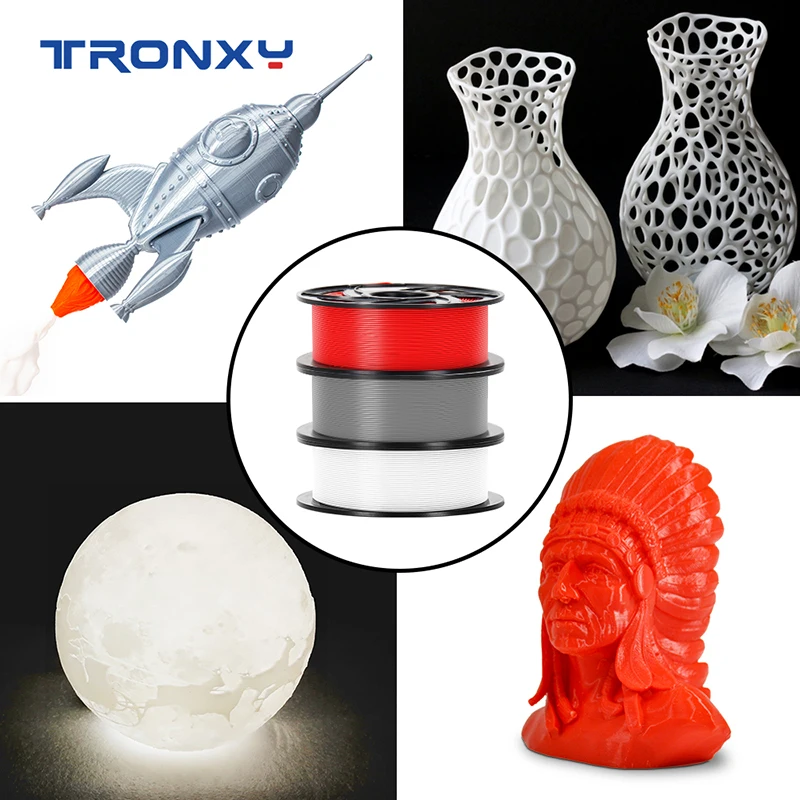 It has a higher ultimate tensile strength and lower Young’s Modulus (which measures rigidity), meaning that it can resist external forces better. So if you need a material that can withstand a lot of wear and tear or impact, PETG is the better choice.
It has a higher ultimate tensile strength and lower Young’s Modulus (which measures rigidity), meaning that it can resist external forces better. So if you need a material that can withstand a lot of wear and tear or impact, PETG is the better choice.
Is ABS or PLA stronger?
PLA is a stronger 3D printer filament than ABS. However, the lower melting temperature of PLA makes it unsuitable for some applications. PLA is also more brittle than ABS. Depending on your application, one or the other may be better suited.
For example, if you need a strong, rigid material that can withstand high temperatures, PLA wouldn’t be a good choice. On the other hand, if you need a material that’s easy to work with and doesn’t require high temperatures to melt, PLA would be a better option.
Recommended:
PLA vs ABS: Which Filament is Better?
Is PLA or resin stronger?
Parts that are printed with popular 3D printer filaments, like PLA, ABS, PETG, and Nylon are nearly always stronger than those printed with resin.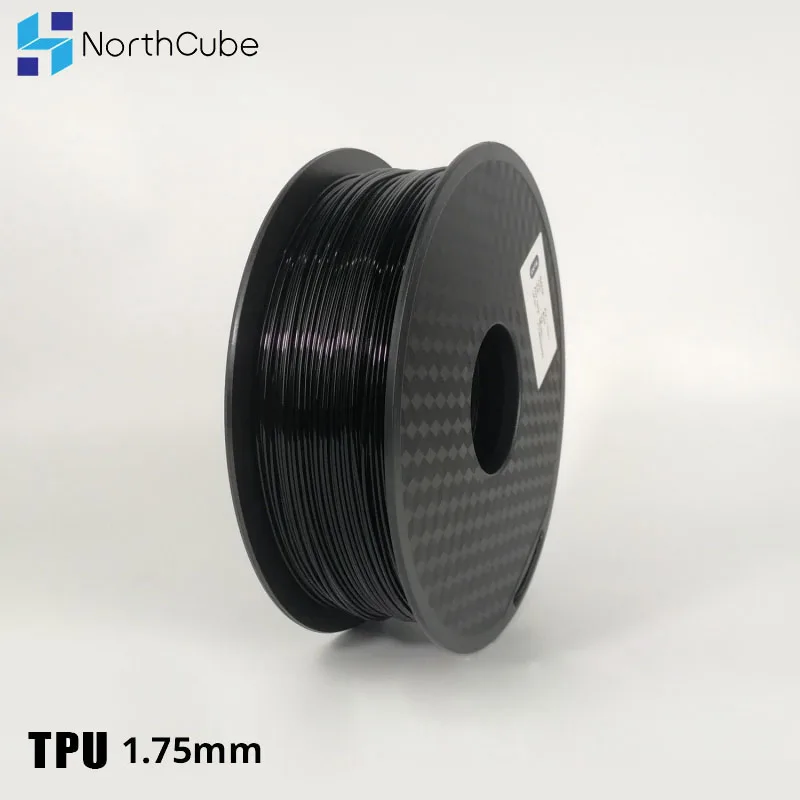 Not only do they have higher tensile filament strength, but they also are more resistant to impact.
Not only do they have higher tensile filament strength, but they also are more resistant to impact.
Resin 3D prints are notoriously brittle, and unless you are 3D printing with specially formulated strong resin, you will find that your FDM printed parts have higher strength.
Recommended:
Resin vs Filament 3D Printers: What’s the Difference?
Conclusion
The studies mentioned above and test results prove that PEEK is the strongest 3D printer filament. It has an excellent strength-to-weight ratio and is suitable for high-performance applications. It is expensive and not easily accessible, limiting it for special industrial applications.
Polycarbonate, Nylon, and composite filaments like Carbon fiber-infused filament are the other alternatives. They show a high level of strength for many applications. These strong filaments have excellent stiffness and toughness while printing with relative ease. They’re more suited toward prosumer applications and are available in various mixes.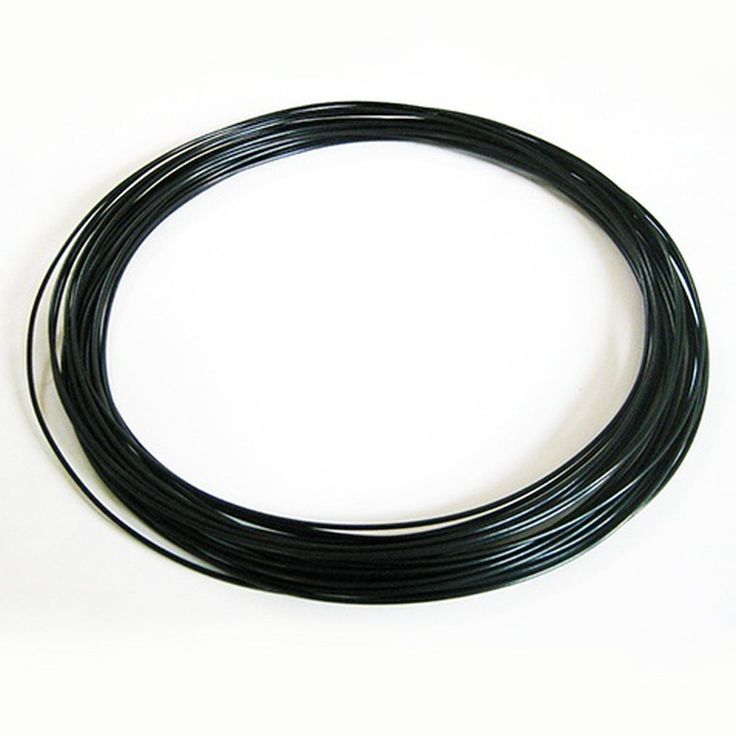
Which one do you think would give you the best strength for your applications? Let us know your experience with these filaments. If you have anything else to add, feel free to comment below.
What is the most durable material for 3D printing?
3DPrintStory 3D printing process What is the most durable material for 3D printing?
While the 3D printing process seems like a great alternative to traditional manufacturing methods, the parts produced can be fragile and unusable. As a rule, this is the result of using standard materials that are not designed for strength and durability. But there is a solution: use durable materials! Durable 3D printing materials can greatly enhance your options, as you can print parts and assemblies for small projects without fear of breakage.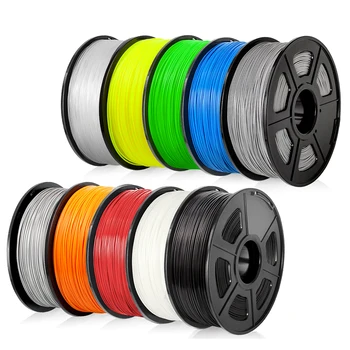 nine0005
nine0005
In this article, we'll take a look at the three most durable types of 3D printing materials. However, before that, we will take a closer look at what strength means in terms of filament materials.
What is strength and how do we evaluate it?
The strength of a material can be measured and evaluated in different ways. In this article, we will mainly use tensile strength (stress before something breaks). We will list the tensile strength of each 3D printing material in pounds or pounds per square inch (PSI). nine0005
Despite the obvious number of pounds the material can support, there is still a margin of error depending on how the part was printed. We've compiled research from a variety of sources to make sure these three materials are the strongest.
You must also understand that the material itself is not the only factor that affects the strength of the finished product. The design itself, post-processing and the 3D printing process also affect the strength of the part.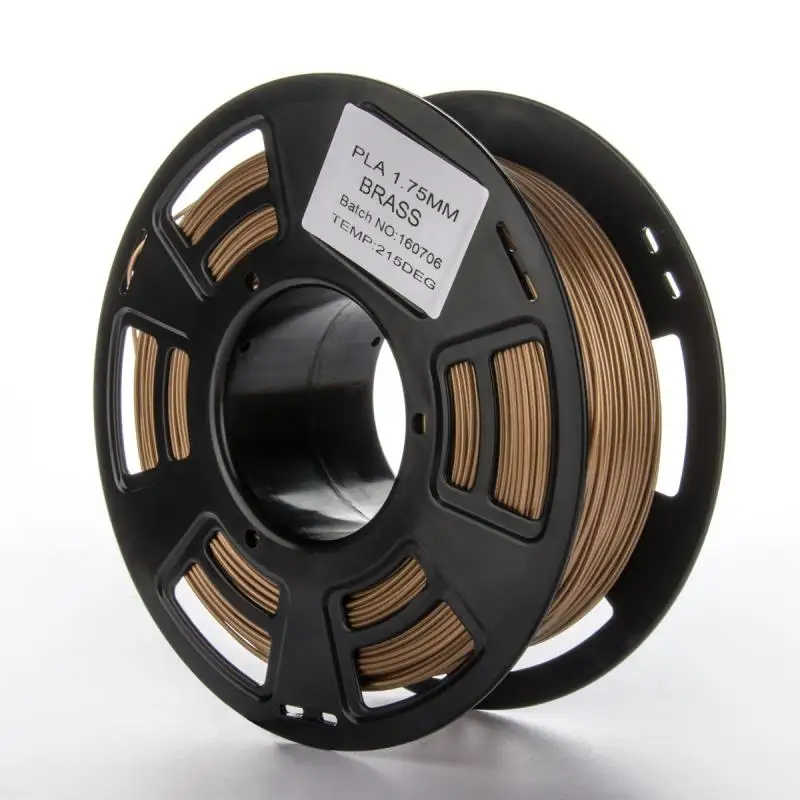
Polycarbonate
Polycarbonate (PC) is considered by many manufacturers and reviewers to be the strongest 3D printing filament available. In particular, it is possible to achieve high strength of polycarbonate products by 3D printing with an all-metal hot end and a 3D printer in a case that is isolated from the influence of the external environment.
Some Numbers
Airwolf 3D has come to the conclusion after many filament tests that polycarbonate is the best choice of durable filaments for desktop 3D printers. They were able to hang up to 685 pounds on a polycarbonate printed hook and found that this material had a tensile strength of 9800 psi. In contrast, the same part printed in PLA could only support 285 pounds.
Using a similar test, MatterHackers studied the tear strength of this type of thread, as well as a number of other materials. They were able to hang an average of 409 pounds on the polycarbonate hook, while the PLA parts had a significantly lighter average weight of just 154 pounds.
Finally, renowned 3D printing YouTuber Thomas Sunladerer reviewed several polycarbonate materials and gave very positive feedback on the strength of the material. nine0005
3D printing with polycarbonate
It is worth noting that the quality of 3D printing with polycarbonate is not very good. Compared to other materials, protrusions and small details may not turn out as well as using the same PLA.
According to Rigid.Ink, polycarbonate is mostly sold in clear. This 3D printing material has excellent heat resistance as well as impact resistance. But note that you will have to print at high temperatures. As mentioned above, it is better to use an enclosed 3D printer and a solid metal hotend. nine0005
Pros of polycarbonate : extra strong, excellent thermal and impact resistance.
Cons of polycarbonate : does not cope well with protrusions and small details of a 3D model, requires a body and an all-metal hot end, a limited number of colors.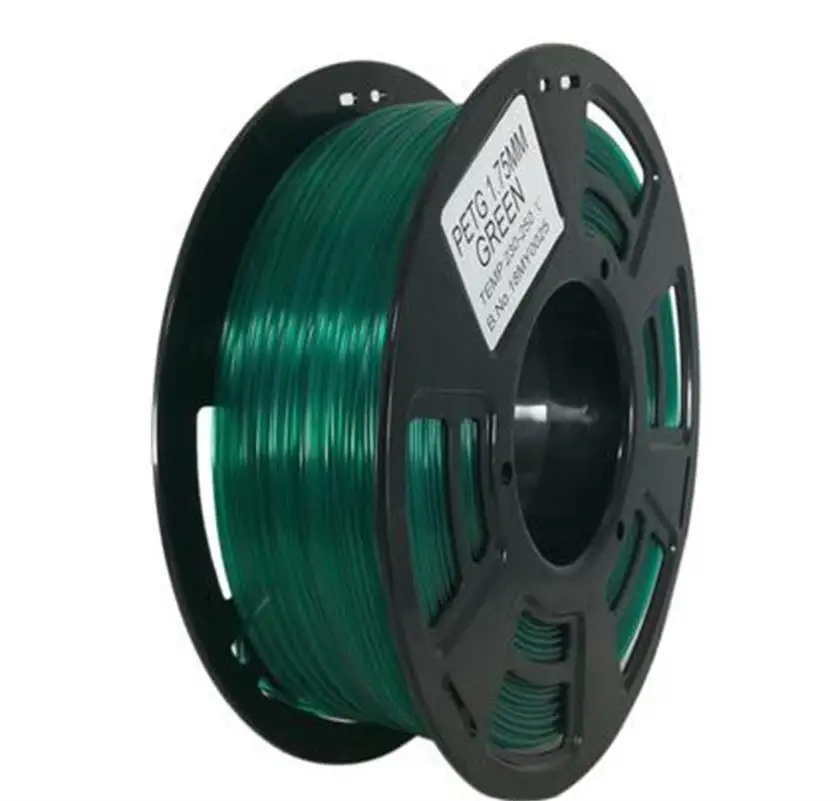
Nylon
Next on our list of durable 3D printing materials is nylon. This material is considered by many to be the most reliable for desktop 3D printers. Nylon is inferior in strength to polycarbonate, but still clearly stronger than other competitors such as PLA and ABS. nine0005
Some numbers
A hook printed with nylon (910) thread had a breaking strength of 7,000 psi, while the same ABS hook only had a strength of 4,700 psi, according to Airwolf 3D. Airwolf 3D also noted that the nylon filament-printed clip holds 485 pounds.
MatterHackers posted similar results and noticed that a hook printed with their NylonX material can hold an average of 364 pounds before it breaks. Rigid.Ink also reviewed some nylon threads and gave them a four out of five rating for strength and a five for durability. For comparison: the strength and durability of PLA is three conventional units. nine0005
Nylon 3D printing
Nylon is slightly easier to print than polycarbonate, but it's still not PLA.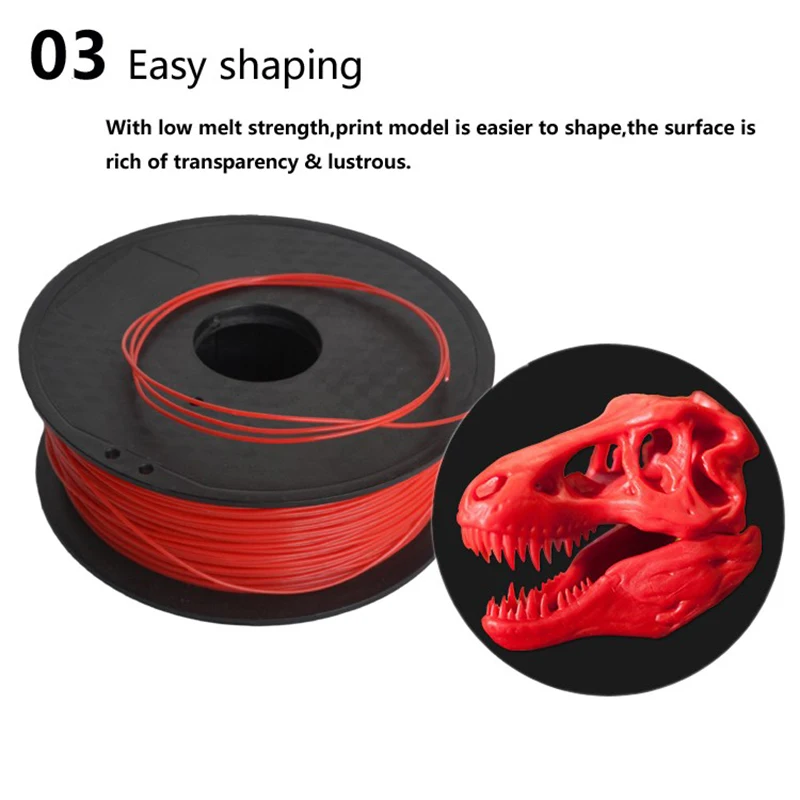 Nylon filament is quite hygroscopic, so it must be kept dry and requires a high printing temperature of 220-270°C. This material is prone to slight warpage, but is also resistant to impact, fatigue, and high temperature.
Nylon filament is quite hygroscopic, so it must be kept dry and requires a high printing temperature of 220-270°C. This material is prone to slight warpage, but is also resistant to impact, fatigue, and high temperature.
Nylon pros: impact resistance, fatigue resistance, heat resistance, easier to print than polycarbonate.
Nylon 9 cons0042 : hygroscopic, warping, very high hot end temperature required.
Composites
Finally, composite threads, although not essentially a single material, can be extremely strong. Composites are threads with certain additives that affect the properties of the material, including to increase strength. The names of these threads usually have the words "pro", "reinforced" (reinforced) or "infused" (infused), since they are usually a mixture of different materials. nine0005
For this reason, it is impossible to assess where the composite fibers are compared to the two previous materials.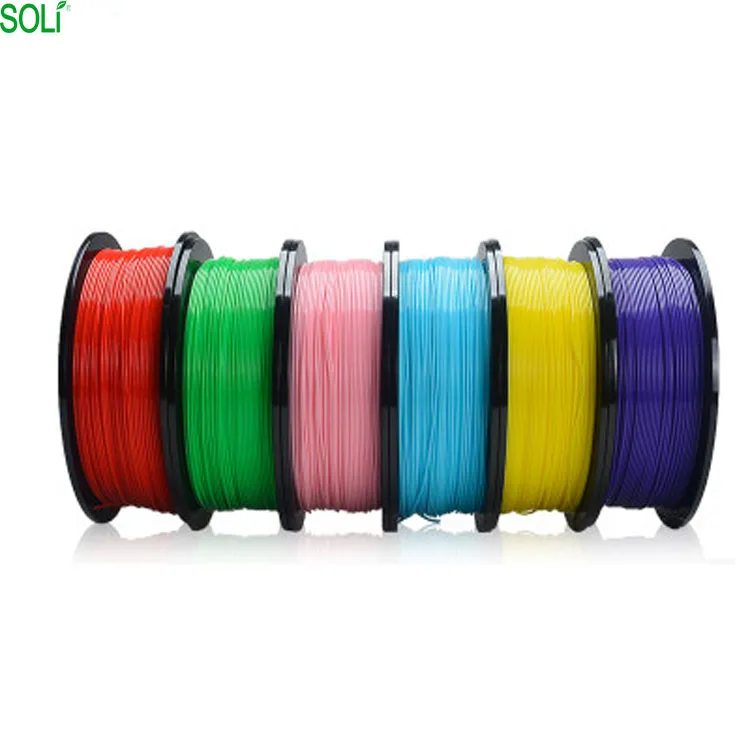 Some composites, such as Carbonyte, can compete with nylon threads for strength, while some composites are less durable.
Some composites, such as Carbonyte, can compete with nylon threads for strength, while some composites are less durable.
It all depends on what the composite thread consists of. Durable is usually a high strength material such as nylon impregnated with another high strength material such as carbon fiber or glass. nine0005
Speaking of carbon fiber, this is also a very strong filament that is sometimes used for 3D printed bicycles. However, some composite fibers are stronger than many pure carbon fibers, so they are not in the top three, but deserve special mention as composite fibers.
Some numbers
We will use carbon fiber nylon and glass fiber nylon threads as examples. MatterHackers has determined that hooks printed on these materials can hold an average of 349and 268 pounds respectively.
Rigid.Ink gave the fiberglass nylon filament four out of five ratings for strength and five for durability. They also gave the carbon fiber nylon a five out of five rating for both strength and durability.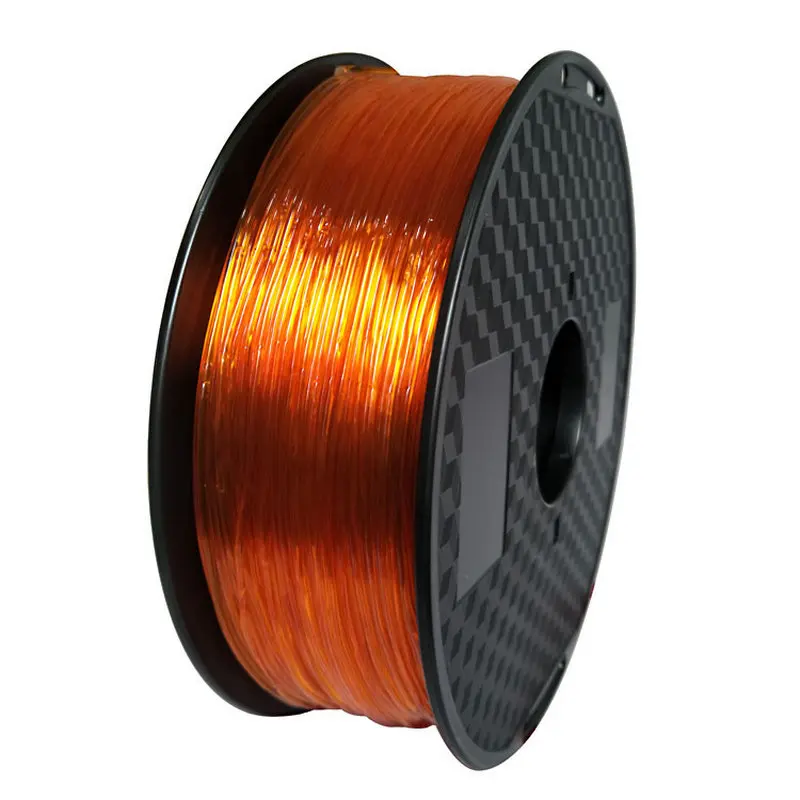 In comparison, PLA and ABS were in the top three for strength.
In comparison, PLA and ABS were in the top three for strength.
3D printing with composites
Composites vary in the way they are 3D printed, but they are generally relatively similar to their base material. Durable composite fibers are usually made from nylon, so you'll have to print at fairly high temperatures. These threads are also quite expensive. nine0005
Advantages of composites : This is a combination of several materials to achieve the best possible properties, durable.
Cons of composites: Expensive, requires high 3D printing temperatures.
save on filament 3d printer items at Banggood UK
save on filament 3d printer items at Banggood UKBrands
- nine0108
LEARN MORE
Printer filament material
price -
OK
Deliver from nine0005
- nine0133
- nine0137
- nine0141
-
eSUN® ePLA-Matte 3D Printer Filament 1.
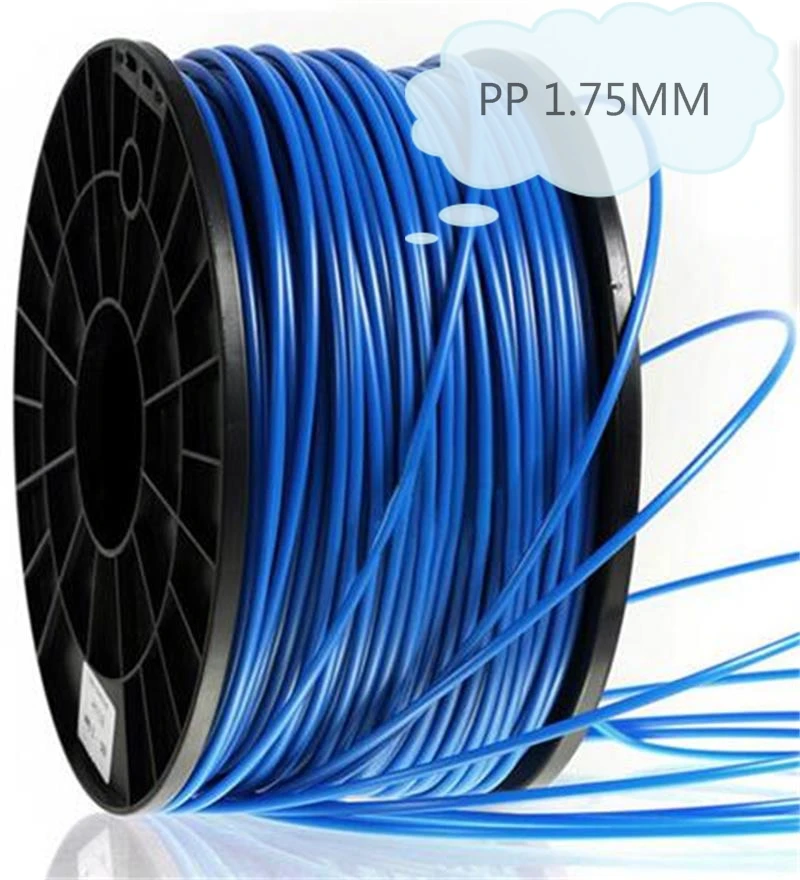 75mm, 1kg, 2.2lb, 3D Printing Filament, Matte Surface, Low Density 3D Printing Material30 reviews COD nine0005
75mm, 1kg, 2.2lb, 3D Printing Filament, Matte Surface, Low Density 3D Printing Material30 reviews COD nine0005 - nine0109
- nine0109
- nine0109
- nine0109
- nine0109
- nine0109
- nine0109
- nine0109
Total 1 page
Go to page
Go to
Verify your age
You must be at least 18 years old to enter this section.